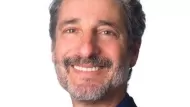A commodity is something that is normally bought and sold. Not everything is a commodity. Sure, most people need to purchase a certain amount of food, clothing and housing, but many other things that we value are not for sale. For example, simply purchasing exercise equipment will not make you physically fit – it requires effort. Similarly, health, safety, education, rewarding personal relationships, community and our satisfaction with life are aspirations that depend more on our behavior than on how much we spend.
A commodity is something that is normally bought and sold. Not everything is a commodity. Sure, most people need to purchase a certain amount of food, clothing and housing, but many other things that we value are not for sale.
For example, simply purchasing exercise equipment will not make you physically fit – it requires effort. Similarly, health, safety, education, rewarding personal relationships, community and our satisfaction with life are aspirations that depend more on our behavior than on how much we spend.
This is not to deny that a certain amount of money is helpful, for example, to afford good food, safe vehicles, and adequate schools, but spending more does not guarantee greater success. In fact, as we become materially wealthier, the benefits from additional spending tends to decline – we are often better off spending less money and more time on the activities we care about.
For example, it is common for people to work extra hard so they can afford an exotic holiday that they think need to recover from the stress of work. They would probably be better reducing their work hours, and the stress in their life, even if this requires accepting a less glamorous but cheaper holiday.
This has important implications for planning. There are two, mutually exclusive visions of "paradise." One envisions paradise as a commodity, a distant place that you can buy (for a home or cottage) or rent (as a holiday destination) if you can afford it. The more you spend, the closer you get to real paradise. This is the perspective that we commonly see in holiday and real estate advertising. Publications, such as "Sperlings Best Places" (www.bestplaces.net), claim to identify the cities that are best for certain groups or activities (such as "Best Cities For Seniors" and "Romantic Cities for Baby Boomers").
That perspective reflects the idea that people should continually move from one place to another, until they find the "best," and there is noting wrong with spoiling a place if you can afford to replace it with one that is better. This discourages people from putting their heart and soul into a particular location.
The other vision perceives paradise as something we create within our own community, by developing friendships, social institutions, businesses, services and a healthy environment. From this perspective, paradise is not a commodity, it is the outcome of the effort we invest into people and the build and natural environment in a particiular place.
The challenge facing planners is to help build a vision that every community can become paradise.
For more information see:
Todd Litman (2007), Community Cohesion As A Transport Planning Objective, VTPI (www.vtpi.org); and www.vtpi.org/cohesion.pdf.

Planetizen Federal Action Tracker
A weekly monitor of how Trump’s orders and actions are impacting planners and planning in America.

Map: Where Senate Republicans Want to Sell Your Public Lands
For public land advocates, the Senate Republicans’ proposal to sell millions of acres of public land in the West is “the biggest fight of their careers.”

Restaurant Patios Were a Pandemic Win — Why Were They so Hard to Keep?
Social distancing requirements and changes in travel patterns prompted cities to pilot new uses for street and sidewalk space. Then it got complicated.

Platform Pilsner: Vancouver Transit Agency Releases... a Beer?
TransLink will receive a portion of every sale of the four-pack.

Toronto Weighs Cheaper Transit, Parking Hikes for Major Events
Special event rates would take effect during large festivals, sports games and concerts to ‘discourage driving, manage congestion and free up space for transit.”

Berlin to Consider Car-Free Zone Larger Than Manhattan
The area bound by the 22-mile Ringbahn would still allow 12 uses of a private automobile per year per person, and several other exemptions.
Urban Design for Planners 1: Software Tools
This six-course series explores essential urban design concepts using open source software and equips planners with the tools they need to participate fully in the urban design process.
Planning for Universal Design
Learn the tools for implementing Universal Design in planning regulations.
Heyer Gruel & Associates PA
JM Goldson LLC
Custer County Colorado
City of Camden Redevelopment Agency
City of Astoria
Transportation Research & Education Center (TREC) at Portland State University
Camden Redevelopment Agency
City of Claremont
Municipality of Princeton (NJ)



























